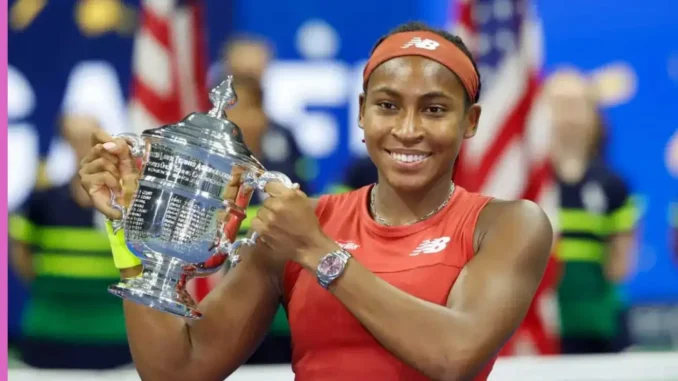
The world of tennis agency representation, a domain often characterized by long-term partnerships and established affiliations, recently witnessed a significant shift as Coco Gauff parted ways with Roger Federer’s Team8 agency. This move, marking a departure from a high-profile association, has ignited discussions within the tennis community, prompting analysis of the factors that may have influenced the decision.
Gauff, a rising star in women’s tennis, had been represented by Team8, an agency co-founded by the legendary Roger Federer. The partnership, initially seen as a promising alignment of talent and expertise, aimed to guide Gauff’s burgeoning career both on and off the court. However, recent developments have indicated a change in direction.
The decision to separate from Team8 signals a strategic realignment for Gauff, as she navigates the complexities of her rapidly evolving career. The move suggests a desire for a different approach to her representation, potentially reflecting a shift in priorities or a search for a more personalized management style.
“It’s about finding the right fit, the right team to support your vision,” a source familiar with the situation commented, alluding to the importance of alignment between player and agency. The pursuit of a representation that resonates with an athlete’s individual goals and aspirations is a critical aspect of professional sports.
The implications of this change extend beyond the immediate impact on Gauff’s career. Her decision also prompts reflections on the dynamics of player-agency relationships in the modern tennis landscape. As the sport becomes increasingly commercialized, the role of agencies in managing players’ careers has expanded significantly.
The discussions surrounding Gauff’s move have also touched upon the evolving needs of young athletes in the digital age. The rise of social media and the increasing emphasis on brand building have transformed the landscape of sports marketing. Agencies are now tasked with navigating a complex web of endorsements, sponsorships, and public relations, requiring a multifaceted approach.
“It’s not just about on-court performance anymore; it’s about building a holistic brand,” a commentator observed, highlighting the expanding responsibilities of player representation. The ability to manage an athlete’s public image and cultivate strategic partnerships has become a crucial aspect of agency work.
Furthermore, the separation raises questions about the long-term viability of player-founded agencies. While the allure of working with iconic figures like Federer can be significant, the practicalities of managing a diverse roster of clients can present unique challenges.
“The business side of tennis is demanding, even for the most experienced individuals,” it was noted, underscoring the complexities of agency management. The ability to balance the demands of running a business with the individual needs of clients requires a delicate balance.
Gauff’s decision to break away from Team8 marks a pivotal moment in her career, signaling a new chapter in her professional journey. As she embarks on this next phase, the tennis world will be watching closely to see how this strategic realignment shapes her trajectory both on and off the court. The move highlights the ever evolving nature of the sport, and the need for all parties involved to constantly evolve.
Leave a Reply